7 kitchen cleaning mistakes you're making – and what professional cleaners urge you to do instead
From damaging delicate surfaces to using too much soap, give these a miss
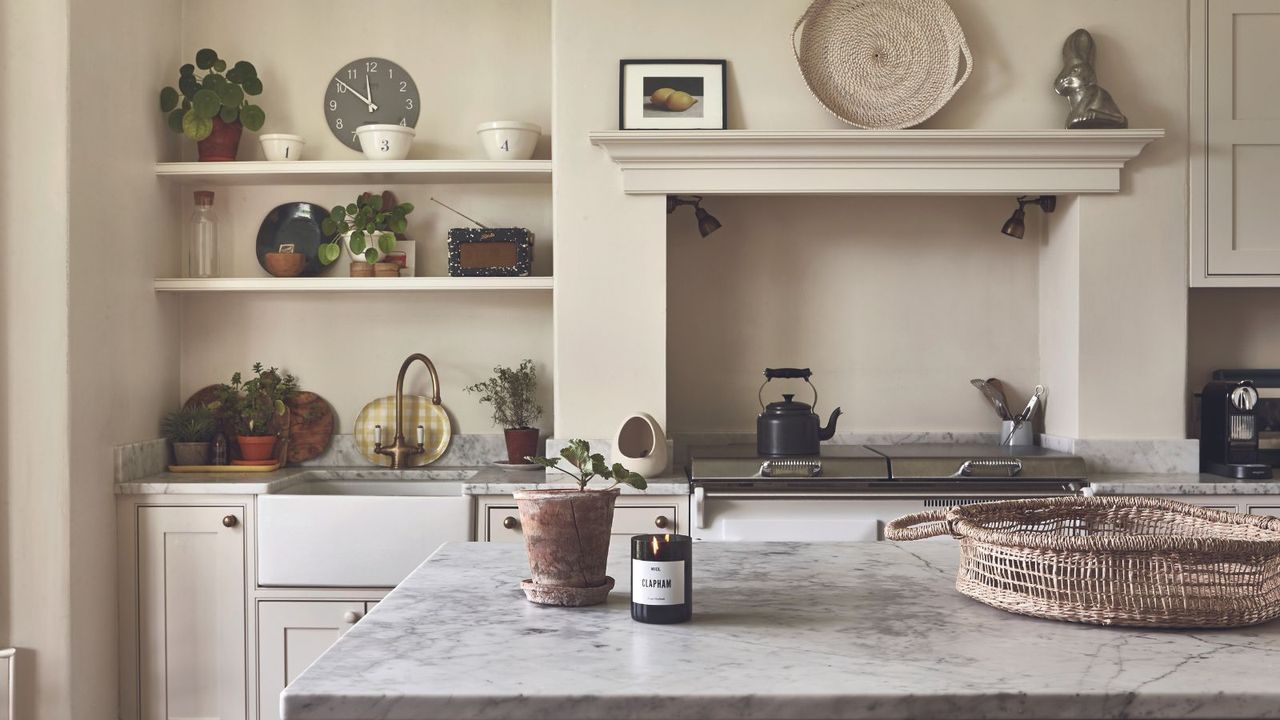

Even the most well-intentioned kitchen cleaning can result in mistakes that make your efforts less effective – or even cause damage.
From damaging delicate surfaces to using too much dish soap, cleaning a kitchen well relies on avoiding these seven common kitchen cleaning mistakes, as detailed by our cleaning professionals.
7 kitchen cleaning mistakes to avoid
1. Damaging delicate surfaces

One of the most common kitchen cleaning mistakes is damaging delicate surfaces such as marble or stone.
Not all kitchen surfaces can handle harsh cleaners or abrasive scrubbing. These can cause etching, corrosion, or leave scratches, especially on natural materials.
Steven Ip, founder of Cleanzen, says, 'Perhaps the most common error I see is the use of strong cleaners on metal finishes, like a stainless steel sink. This can strip away the protective coating, leading to dullness or even corrosion. This often happens when you clean nearby areas, like countertops or tiles, and the cleaner accidentally comes into contact with the sink.
'To prevent this issue, always choose a cleaner that's safe for both tiles and stainless steel, or use a cleaner specifically designed for multi-surface use.'
Ip recommends Mrs. Meyer's All-Purpose Cleaning Spray, available at Walmart, adding, 'This one is effective and safe for tile floors, countertops, and even stainless steel sinks.' Attitude's Citrus All-Purpose Spray, also from Walmart is another versatile but reliable option.
Laminate surfaces are another that can suffer at the hands of harsh chemicals like bleach.
Ip says, 'Another common mistake is using bleach to remove stains on a white laminate countertop. If left on too long, bleach can cause discoloration or weaken the material over time.
'Opt instead for a spray that's safe for laminate surfaces. Personally, I like Method Daily Granite Cleaner from Amazon – though it's designed for granite, it's also safe for laminate surfaces, neatly removing stains and grime.'
Caring for natural stone worktops also requires special care. Using vinegar or acidic cleaners on stone countertops can cause damage.
Erin Zanelli, owner of Tranquil Home, says, 'While vinegar is a great natural cleaner, it’s too acidic for natural stone like granite, marble, and quartz. Over time, it can dull the finish, weaken the sealant, and cause etching on the surface.
'For daily cleaning, wipe surfaces with a damp microfiber cloth and warm water. For deeper cleaning, use a pH-neutral, stone-safe cleaner applied with a soft cloth or sponge. Always avoid abrasive scrubbers on delicate surfaces.'
More Stone & Quartz Cleanser from Amazon is a reliable pH-neutral cleaning spray with different scent options, including peppermint-thyme.
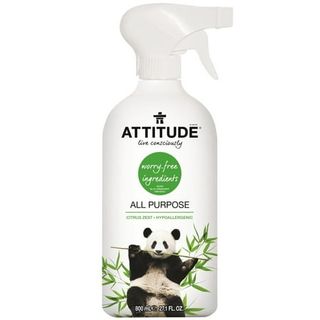
This versatile, eco-friendly cleaner is suitable for multiple surfaces around the kitchen. Its plant-based composition makes it safe for use around children and pets. The 27-fl-oz bottle is long-lasting, and it leaves behind a refreshing citrus scent.
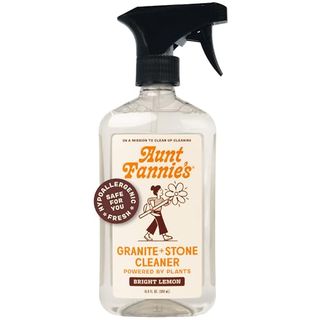
Cleaning pro Erin Zanelli recommends this non-toxic cleaner, which is pet-friendly and has a fresh lemon smell. She says, 'It safely cleans and preserves natural stone without damaging the sealant. I love it because it’s streak-free and has a light, fresh scent.'
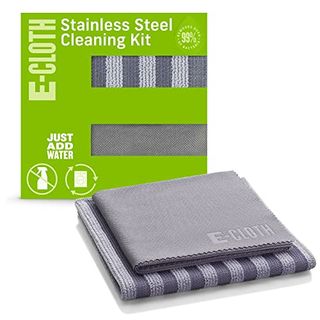
Zanelli also recommends these reusable clothes that come with a 100-wash, one-year promise. Made from 75% polyester, they're ideal for cleaning stainless steel safely – the striped textured side is designed for brushed steel and the softer solid side for polished steel.
2. Ignoring the sink drain
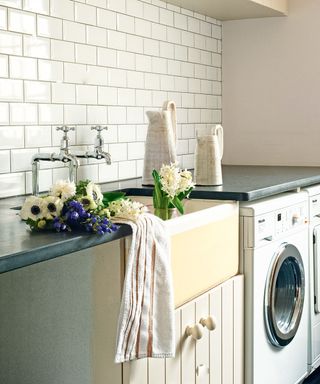
Ignoring the sink drain is a common kitchen cleaning mistake.
Your kitchen sink might look clean, but if the drain isn’t maintained, it can become a breeding ground for bacteria and unpleasant odors.
Zanelli says, 'Food debris, grease, and soap scum build up in sink drains, causing bad odors and potential clogs. Many people only clean the sink basin but neglect the disposal and drain.
'To clean the drain properly, first pour half a cup of baking soda down the drain, followed by one cup of white vinegar. Let it fizz for 5–10 minutes to break down grime and deodorize before rinsing with boiling water to flush away residue.'
White vinegar, available in large containers at Walmart, while Arm & Hammer Pure Baking Soda, also from Walmart, is ideal if you often clean with baking soda.
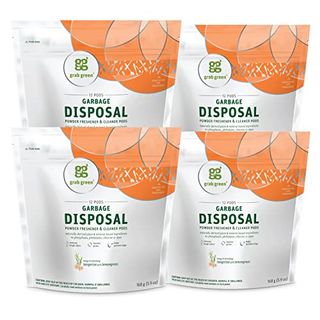
Zanelli recommends these eco-friendly pods that loosen grime and prevent drains and disposals from clogging. She says, 'I love them because they use plant- and mineral-based ingredients to safely break down grime and eliminate odors without harsh chemicals.'
3. Forgetting the trash can
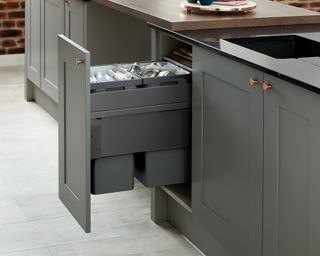
Forgetting to clean the trash can is among the most typical kitchen cleaning mistakes.
Even if you take out the trash regularly, the can itself can harbor grime, bacteria, and lingering odors. Spills, leaks, and food residue can accumulate at the bottom, so it's no surprise that it's one of the dirty spots professional cleaners always notice in homes.
To prevent this, wash the inside of the trash can with warm, soapy water weekly and sprinkle baking soda at the bottom to absorb odors.
Wells Ye, founder of Fresh Tech Maid, says, 'We all know that if you don't change the garbage often enough, the smell of leftover food can attract pests. But many people forget that the can itself needs regular cleaning too.
'Regularly empty the trash and rinse the trash can's interior with mild soap and hot water to remove the buildup of food particles. Use disinfecting spray and enable the trash van to air dry completely to prevent moisture buildup.'
If making your own cleaning spray, consider adding a few drops of your favorite essential oil to mask trash can smells.
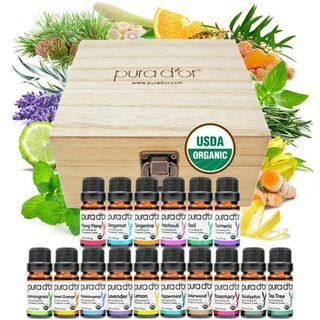
With 16 stunning scents ranging from lavender to tea tree, this complete starter set of essential oils is perfect for those who love to customize their home's scent and mix their own cleaning products.
4. Forgetting behind appliances
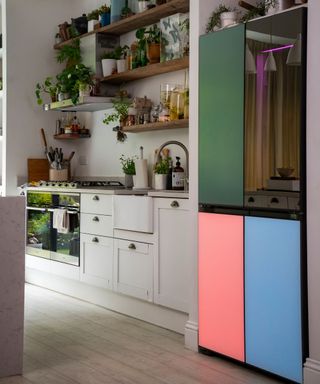
A common kitchen cleaning mistake is to forget to clean behind kitchen appliances, such as refrigerators or washers.
Crumbs, grease, and dust can collect behind and underneath appliances, creating an ideal environment for pests and bacteria.
Ye says, 'Many homeowners forget to clean the areas behind the appliances like refrigerator, stove, microwave, and dishwasher. However, dust, food crumbs, and grease slowly accumulate in these hard-to-reach areas over time, sometimes resulting in foul odors.'
Instead, whenever you clean your refrigerator – or even smaller appliances such as your microwave, air fryer, coffee maker, kettle, or blender – pull it out far enough to fully tackle the area underneath and behind.
Ye explains, 'I typically begin by using a vacuum cleaner, then wipe away any grease or grime with a cloth and cleaning spray. When cleaning behind the refrigerator, remember to check the coils and remove any dust buildup to reduce energy consumption and increase efficiency.'
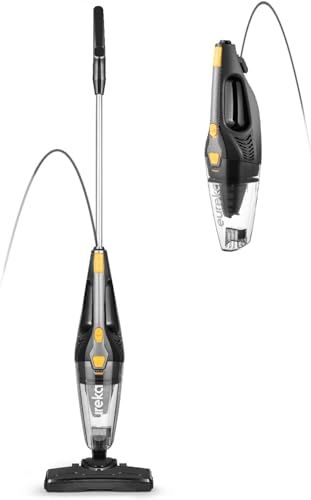
Cleaning pro Wells Ye recommends this clever vacuum, that can detach to become handheld. He says, 'I use this to clean under and behind appliances. The lightweight design makes maneuvering around heavy kitchen appliances like my washer or refrigerator easy. Moreover, the cleaner's strong suction efficiently removes dust, dirt, and crumbs from tight spaces.'
5. Overusing the sponge
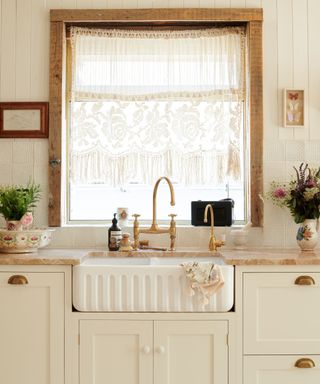
Overusing sponges is a kitchen cleaning mistake to avoid.
A kitchen sponge is one of the most bacteria-ridden items in the home, especially if it’s damp and used for too long.
Karina Toner, operations manager at Spekless Cleaning, says, 'Sponges trap bacteria, food particles, and grease. Many people don't realize that a dirty sponge can spread germs instead of cleaning them up!
'Instead, replace your sponge every one to two weeks, or sooner if it smells. Disinfect between uses by microwaving a damp sponge for 30-60 seconds. You can also consider using silicone sponges or disposable cleaning wipes.'
The Scrub Daddy Sponge, from Walmart is a reliable option that has gentle abrasion under warm water for your regular cleaning but goes hard under cold water when you need to clean tougher kitchen grease.
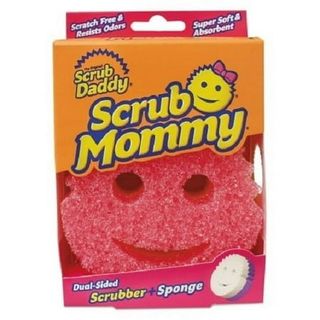
This bestselling sponge not only has excellent versatility – including a handy smile that will help you clean your cutlery – it can also be easily cleaned and sanitized. Simply throw it into your dishwasher for one spin cycle and it comes out sanitized.
6. Forgetting the dishwasher filter
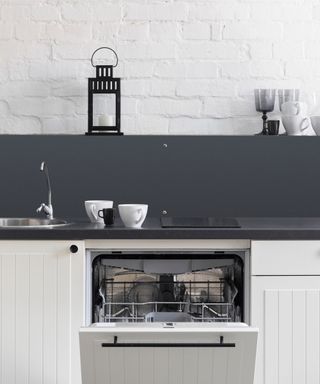
When it comes to cleaning your kitchen, don't forget to clean the dishwasher filter.
Many people assume their dishwasher is self-cleaning, but the filter inside can trap food particles and grease, leading to poor performance and bad odors.
Toner says, 'A clogged dishwasher filter leads to dirty dishes, bad smells, and poor drainage. To clean your dishwasher filter properly, remove and rinse it once a month under hot water, then soak it in vinegar to break down grease. Meanwhile, clean your dishwasher with a damp cloth.'
When addressing your dishwasher, cleaning with vinegar is an easy and natural option that only requires placing a dishwasher-safe bowl full of white vinegar on the top rack and running a normal cycle. You can also keep it clean by using lemon halves in your dishwasher regularly.
7. Using too much dish soap

Being more economical with dish soap is one of the ways you can improve your kitchen cleaning routine.
It’s easy to think that more soap equals cleaner dishes, but overusing dish soap can leave a filmy residue on both dishes and sink surfaces.
Toner says, 'Excess soap leaves a film on dishes and surfaces, making them look cloudy. It also means you're paying more than you need. Instead, use only a few drops of soap per dish load, rinsing thoroughly with hot water to remove all residue.'
Dawn Ultra Dish Soap from Walmart is our favorite brand for its combination of effectiveness and affordability.
Remember also that wiping the sink down after every use is one of the many things people with clean kitchens always do to keep a kitchen spotless.
Meet the experts

Steven Ip is the founder of Cleanzen, a reputable cleaning and home organization service provider committed to exceptional standards. Steven emphasizes eco-friendly practices and the use of natural cleaning products.

Erin Zanelli is the owner of Tranquil Home, an eco-friendly cleaning company based in San Diego, California. With 13 years of industry experience, she specializes in non-toxic cleaning solutions and sustainable practices for both residential and commercial spaces.

Wells Ye is founder of cleaning company, Fresh Tech Maid, which has been sprucing American homes for 25 years. The company's trusted technicians complete a rigorous 10-step evaluation process to ensure exemplary cleaning services.

With extensive contributions in Homes & Gardens, Real Homes, The Spruce, and many more home and lifestyle magazines, industry expert Karina has extensive knowledge of both commercial and residential cleaning, and champions non-toxic and eco-friendly cleaning methods.
So there you have it – seven kitchen cleaning mistakes, and what to do instead.
Cleaning the kitchen isn’t just about wiping down countertops – it’s about maintaining every part of the space. By avoiding these common mistakes, you can keep your kitchen cleaner, extend the life of your appliances, and make daily maintenance easier.
Following a kitchen closing shift routine nightly can also help you stay on top of mess, tackling crumbs and grease before you end up cleaning when you feel overwhelmed.
Sign up to the Homes & Gardens newsletter
Design expertise in your inbox – from inspiring decorating ideas and beautiful celebrity homes to practical gardening advice and shopping round-ups.

With more than a decade of experience writing news, lifestyle, consumer, and human interest articles for a wide range of national and international publications, Andy is a highly-qualified journalist writing features for the national press. From front porch to backyard, attic to basement, Andy has written about every area of the home. He specialises in bringing together the best industry expertise to answer all of your most pressing home and garden questions about seasonal and everyday cleaning, decluttering, organizing and DIY.
You must confirm your public display name before commenting
Please logout and then login again, you will then be prompted to enter your display name.
-
 Where do interior designers find creative inspiration? We asked 9 designers to share, and their answers reflect how today's trends are formed
Where do interior designers find creative inspiration? We asked 9 designers to share, and their answers reflect how today's trends are formedAsking the interior designers who set the trends where they get their inspiration helps understand why decor today looks how it does
By Pip Rich Published
-
 7 fruits to plant in April for years of tasty homegrown harvests, plus expert planting tips
7 fruits to plant in April for years of tasty homegrown harvests, plus expert planting tipsAn exceptional selection of fruit trees and soft fruit can be planted this month
By Drew Swainston Published
-
 I kept finding unsightly mold in my closet until I tried this budget-friendly trick – now my clothes stay pristine
I kept finding unsightly mold in my closet until I tried this budget-friendly trick – now my clothes stay pristineIt saved my favorite garments and doesn't need electricity or batteries
By Eve Smallman Published
-
 I tried the 'Spring Cleaning Bingo Method', and it was a game-changer for a less stressful clean in my tiny home, say psychologists
I tried the 'Spring Cleaning Bingo Method', and it was a game-changer for a less stressful clean in my tiny home, say psychologistsIt was the motivational boost I needed to make my spring cleaning a success at home
By Rebecca Shepherd Published
-
 This is the one place in the home you should never steam clean – and what to do instead
This is the one place in the home you should never steam clean – and what to do insteadSteam cleaning hardwood could ruin your natural, beautiful flooring
By Dan Fauzi Published
-
 I’ve ditched my usual mop, dusters and scrubbers for this compact Joseph Joseph cleaning system – it's great for bathrooms
I’ve ditched my usual mop, dusters and scrubbers for this compact Joseph Joseph cleaning system – it's great for bathroomsStreamline your cleaning system and save space with this all-in-one kit
By Ottilie Blackhall Published
-
 7 overlooked outdoor cleaning spots to tackle this weekend – and why spring is the easiest season to refresh them
7 overlooked outdoor cleaning spots to tackle this weekend – and why spring is the easiest season to refresh themNeglecting these areas will make the entire space look shabby
By Ottilie Blackhall Published
-
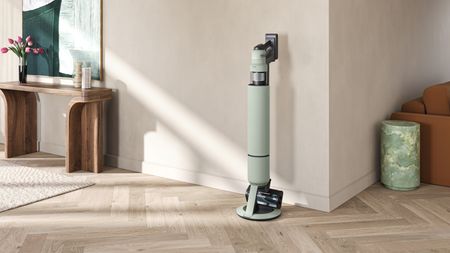 Samsung has just released 'the world's most powerful cordless vacuum' – as an expert vacuum tester, I'm intrigued but skeptical
Samsung has just released 'the world's most powerful cordless vacuum' – as an expert vacuum tester, I'm intrigued but skepticalIt's said to be more powerful than the top Dyson
By Dan Fauzi Published
-
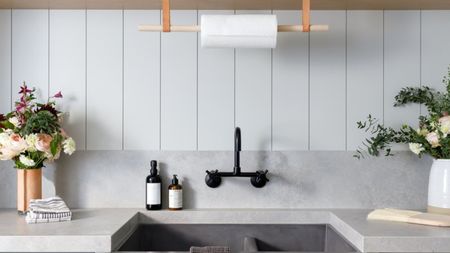 I test and review 100s of cleaning tips for a living – here are the 7 I always use in my own home
I test and review 100s of cleaning tips for a living – here are the 7 I always use in my own homeThese are the only ones that have stuck for me
By Chiana Dickson Published
-
 5 things people with clean home storage always do to protect belongings, curb hidden mold, and prevent pests
5 things people with clean home storage always do to protect belongings, curb hidden mold, and prevent pestsIt's a simple addition to your routine for cleaner and nicer-smelling storage areas
By Chiana Dickson Published